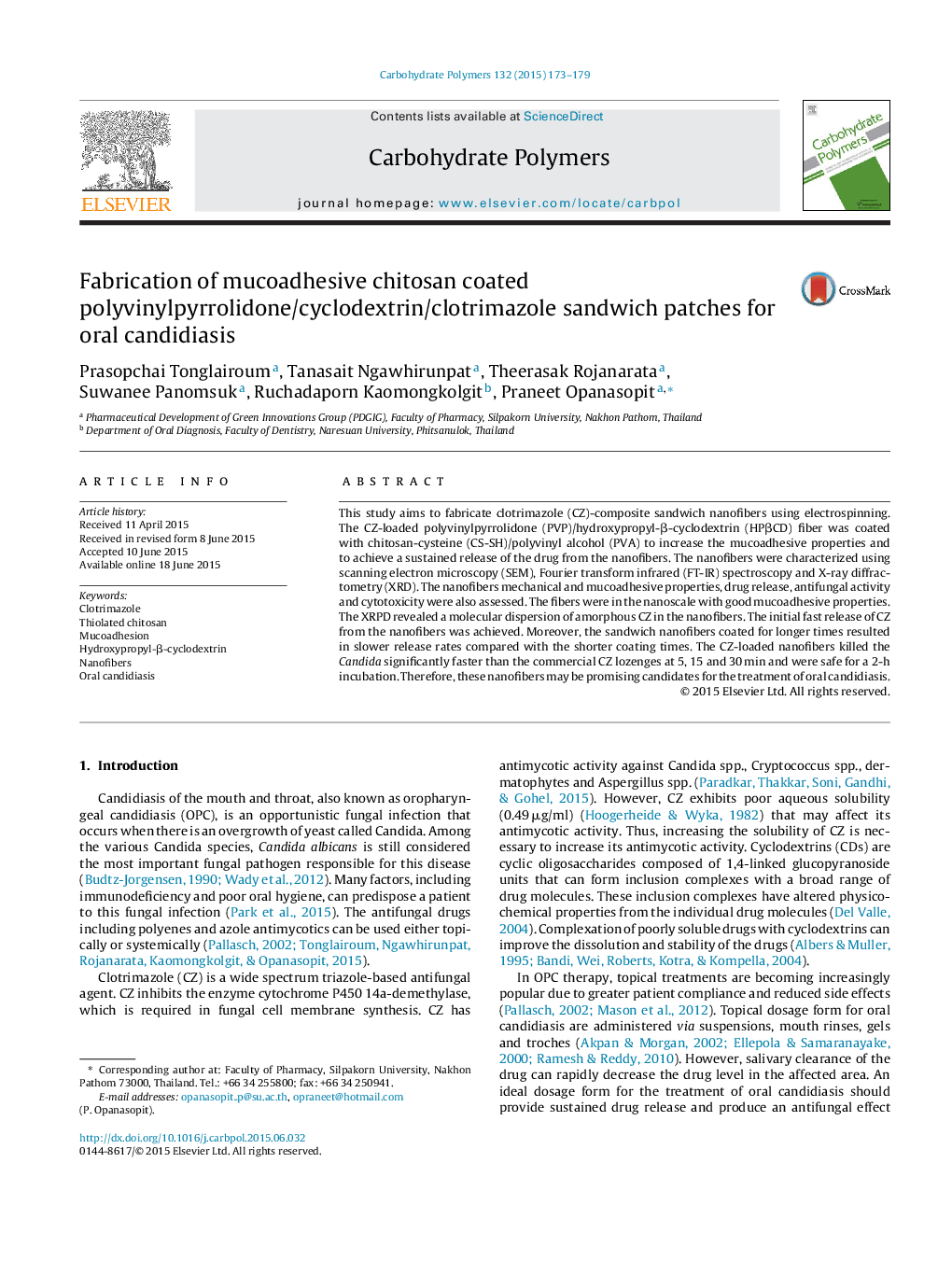| Article ID | Journal | Published Year | Pages | File Type |
|---|---|---|---|---|
| 7787490 | Carbohydrate Polymers | 2015 | 7 Pages |
Abstract
This study aims to fabricate clotrimazole (CZ)-composite sandwich nanofibers using electrospinning. The CZ-loaded polyvinylpyrrolidone (PVP)/hydroxypropyl-β-cyclodextrin (HPβCD) fiber was coated with chitosan-cysteine (CS-SH)/polyvinyl alcohol (PVA) to increase the mucoadhesive properties and to achieve a sustained release of the drug from the nanofibers. The nanofibers were characterized using scanning electron microscopy (SEM), Fourier transform infrared (FT-IR) spectroscopy and X-ray diffractometry (XRD). The nanofibers mechanical and mucoadhesive properties, drug release, antifungal activity and cytotoxicity were also assessed. The fibers were in the nanoscale with good mucoadhesive properties. The XRPD revealed a molecular dispersion of amorphous CZ in the nanofibers. The initial fast release of CZ from the nanofibers was achieved. Moreover, the sandwich nanofibers coated for longer times resulted in slower release rates compared with the shorter coating times. The CZ-loaded nanofibers killed the Candida significantly faster than the commercial CZ lozenges at 5, 15 and 30 min and were safe for a 2-h incubation. Therefore, these nanofibers may be promising candidates for the treatment of oral candidiasis.
Keywords
Related Topics
Physical Sciences and Engineering
Chemistry
Organic Chemistry
Authors
Prasopchai Tonglairoum, Tanasait Ngawhirunpat, Theerasak Rojanarata, Suwanee Panomsuk, Ruchadaporn Kaomongkolgit, Praneet Opanasopit,
